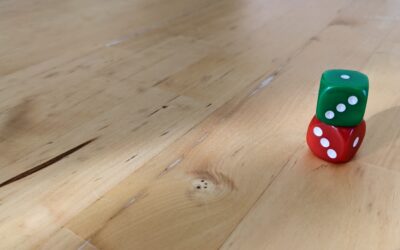Examiner’s Manner of Manufacture Objection Overturned
In the recent Patent Office hearing decision of RYW Holdings Pty Ltd [2022] APO 20 relating to Patent Application 2019284145 for a “Waste Management and Processing System”, the Patent Office examiner’s objection that the invention as claimed was not for a Manner of Manufacture (among other objections), was overturned. We felt it important to remind our readers of the law surrounding Manner of Manufacture in Australia as it has developed into an extraordinarily convoluted area of law touching on issues of novelty as well as supporting disclosure.
The Application
The specification described a waste management and processing system that “allows complete separation of organic (compostable) and non-organic (non-compostable) waste streams” and to “provide targeted compost in controlled small batches”. After five examination reports, the Applicant responded on 29 June 2021 with a request to be heard.
Australian patent law requires that a patentable invention must (among other things) be for a “Manner of Manufacture”. What that actually means has been argued extensively in Australian courts particularly as technology advances and more inventions occur in the digital space.
The seminal case in this area of law is National Research Development Corporation v Commissioner of Patents [1959] HCA 67 (NRDC), explaining at [269]:
a process, to fall within the limits of patentability which the context of the Statute of Monopolies has supplied, must be one that offers some advantage which is material, in the sense that the process belongs to a useful art as distinct from a fine art … that its value to the country is in the field of economic endeavour.
The Courts have continued to clarify NRDC with useful guidance in, for example, Grant v Commissioner of Patents [2006] FCAFC 120 where the Full Court said, at [32]:
A physical effect in the sense of a concrete effect or phenomenon or manifestation or transformation is required. In NRDC, an artificial effect was physically created on the land. In Catuity and CCOM as in State Street and AT&T, there was a component that was physically affected or a change in state or information in a part of a machine. These can all be regarded as physical effects. By contrast, the alleged invention is a mere scheme, an abstract idea, mere intellectual information, which has never been held to be patentable, despite the existence of such schemes over many years of the development of the principles that apply to manner of manufacture. There is no physical consequence at all.
More recently in Technological Resources Pty Limited v Tettman [2019] FCA 1889, Jagot J held (at [154]) that a method of mining involving a series of process steps to be carried out sequentially, with mined ore being passed from step to step and transformed throughout the process to produce upgraded material was a manner of manufacture as the invention “involves physical steps carried out on a physical product using physical apparatus, to produce a physical and tangible result”.
Reasoning
Turning to the current case, the Patent Office examiner rejected the claimed invention as lacking a Manner of Manufacture (among other objections) stating:
though your claimed invention involves features which are technical in nature, and these feature work together to carry out your claimed invention to provide an output material in the form of biological compost; the inclusion of technical features, and an interaction between technical features, which work together to provide a physical product, is not sufficient alone to confer patentability. Specifically, in order to determine patentability, the substance of your claimed invention must be determined. This determination is made with regards to various factors which include the problem solved by your claimed invention and the contribution to the art. Furthermore, as was noted in Repipe Pty Ltd v Commissioner of Patents (No. 3) [2021] FCA 31, the adding of technical but generic details from a specification can not elevate otherwise unpatentable subject matter to patentable subject matter (see Repipe at [65]-[67]).
The Hearing Officer however did not agree with the Patent Office examiner and noted that:
while the substance of the invention that I have identified may conceptually appear to be a scheme for processing compostable waste in two stages before it is composted, it clearly includes a number of features relating to both the decontamination of the compostable waste stream and the subsequent composting process, that in my view are either technical or lead to technical benefits:
- Decontamination of the compostable waste stream before compaction of the waste will certainly be easier and more effective and this will also yield better quality of the final compost.
- The features of pasteurisation, inoculation and curing are all technical features in the processing of the compostable waste into biological compost. Whilst these features/steps in the biological processing of compostable waste may be conventional as asserted by the examiner, that is not a reason to ignore them altogether especially when the claims are specifically directed to the ‘generation of biological compost’.
- The feature of curing the compost in small batches in aeration crates does not appear to have been common general knowledge in the art at the priority date or disclosed in the prior art cited by the examiner. This feature permits better monitoring and control of the conditions during curing leading to more uniform and better quality of the final compost.
The Hearing Officer therefore viewed that these features were not insubstantial or common general knowledge noting “these are all tangible and observable physical effects that provide benefits in the overall process of generation of biological compost from compostable waste. I would certainly not categorise these features as steps in an abstract scheme for processing compostable waste.”
Outcome
This decision reconfirms the need for patent specifications to set out technical problems to be overcome and show a technical effect created by the resultant invention to achieve a Manner of Manufacture. We should again be reminded that Manner of Manufacture is distinct from novelty and inventiveness and an invention can be a Manner of Manufacture but found not new and inventive.









